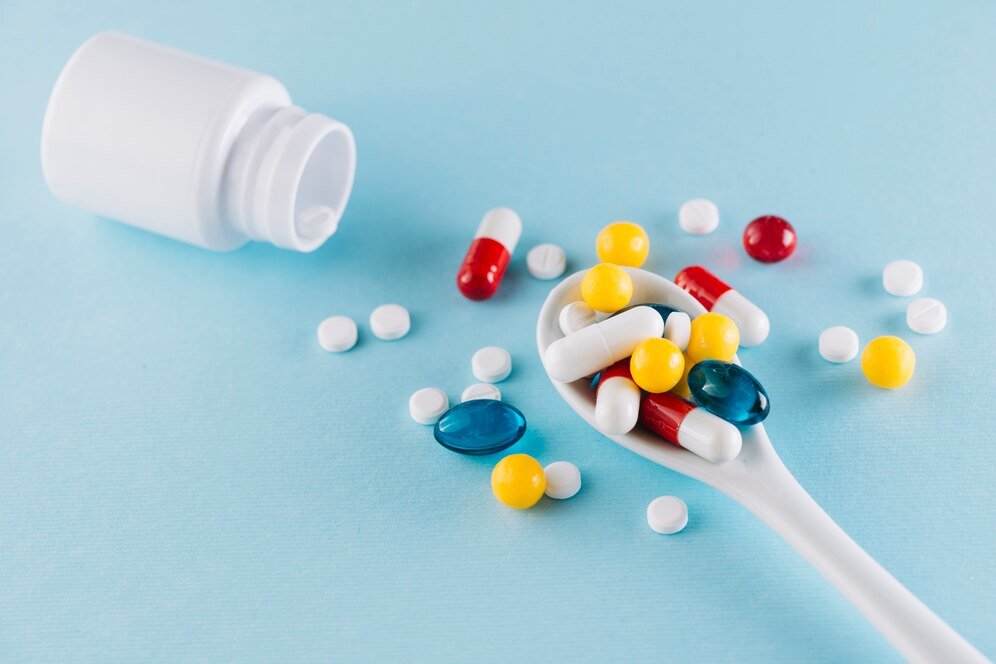Introduction
In today’s world, the demand for effective medications continues to grow, with people seeking reliable solutions for allergies and other related conditions. One such emerging name in the pharmaceutical market is lorphenadine. But what exactly is lorphenadine? How does it work, and what are its primary uses? This article aims to offer an in-depth exploration of lorphenadine, ensuring readers gain valuable insights into this compound. By the end of this guide, you’ll understand its applications, how it compares to other medications, and why it’s garnering attention.
In addition to detailing the uses of lorphenadine, this article focuses on the potential benefits, side effects, dosages, and much more. By understanding these aspects, you will be better equipped to decide whether lorphenadine is the right choice for managing your allergy symptoms or other conditions. Let’s dive into the world of lorphenadine and discover everything there is to know about this promising compound.
Table of Contents
What is Lorphenadine?
Lorphenadine is a type of antihistamine that’s used primarily for treating symptoms of allergies, such as sneezing, runny nose, itchy or watery eyes, and itching of the throat or nose. Lorphenadine works by blocking histamine, a substance in the body that causes allergic symptoms.
This medication can be particularly beneficial during allergy seasons when pollen, dust, or other environmental factors cause discomfort for many individuals. While it is similar in function to other antihistamines, lorphenadine has specific properties that make it stand out, offering longer-lasting relief without causing significant drowsiness—a common drawback of other antihistamines.
How Does Lorphenadine Work?
At the core of lorphenadine’s functionality is its ability to block the actions of histamines, which are chemicals that the immune system releases when the body encounters allergens. Histamines trigger allergy symptoms, which include inflammation, sneezing, itching, and more. When lorphenadine is introduced into the system, it binds to histamine receptors, effectively preventing the histamine from taking effect.
By inhibiting this reaction, lorphenadine can help reduce or completely eliminate symptoms of allergies, making it a go-to solution for many people suffering from both seasonal and chronic allergic reactions.
The Chemistry Behind Lorphenadine
Understanding the chemical structure of lorphenadine helps illuminate how it operates. Lorphenadine is classified as a selective H1-receptor antagonist. The chemical formula of lorphenadine indicates a structure designed to fit precisely into the histamine receptors without activating them, effectively blocking the action of histamine without causing sedation. This selective activity minimizes the central nervous system effects typical of many first-generation antihistamines.
Lorphenadine vs. Other Antihistamines
There are numerous antihistamines on the market, so what sets lorphenadine apart from its counterparts? While older generation antihistamines such as diphenhydramine (commonly found in Benadryl) are highly effective, they often cause drowsiness, fatigue, and impaired motor functions, making them less ideal for daytime use.
Lorphenadine, as a newer generation antihistamine, offers the benefit of controlling allergy symptoms without causing severe drowsiness, making it more suitable for those who need relief while still maintaining their daily activities. Additionally, lorphenadine has a longer half-life, meaning it lasts longer in the body, requiring fewer doses throughout the day.
Benefits of Lorphenadine
The increasing popularity of lorphenadine can be attributed to several key benefits, including:
- Non-Drowsy Relief: Unlike first-generation antihistamines, lorphenadine offers non-sedative relief, allowing individuals to take it during the day without worrying about feeling overly tired or groggy.
- Long-Lasting Effects: Lorphenadine’s prolonged action means that fewer doses are needed, typically providing up to 24-hour relief after a single dose.
- Fewer Side Effects: Since lorphenadine is a second-generation antihistamine, it is less likely to cause side effects like dry mouth, blurred vision, or difficulty urinating, which are common in older medications.
- Effective for Multiple Allergies: Lorphenadine is effective against both indoor and outdoor allergens, including pet dander, pollen, dust mites, and mold, making it versatile for various allergic triggers.
- Improved Quality of Life: By alleviating the symptoms of allergies, lorphenadine can significantly enhance an individual’s quality of life, enabling them to engage in daily activities without the burden of persistent allergy symptoms.
- Convenient Dosing: Lorphenadine is typically available in convenient forms, such as tablets or syrup, making it easy for patients to find a method of administration that suits their preferences.
Common Uses of Lorphenadine
The primary use of lorphenadine is in the treatment of allergic conditions, including but not limited to:
- Seasonal Allergic Rhinitis (Hay Fever): Lorphenadine is commonly prescribed for those suffering from seasonal allergies caused by pollen and other outdoor allergens.
- Chronic Idiopathic Urticaria: This condition causes persistent hives and itching with no apparent cause. Lorphenadine helps manage symptoms and provides relief.
- Food Allergies: Although not a primary treatment, lorphenadine can help alleviate mild allergic reactions to food.
- Skin Allergies: In cases of skin rashes or itching caused by allergens, lorphenadine can be used as part of the treatment plan.
- Respiratory Allergies: Lorphenadine is sometimes used to manage allergic symptoms affecting the respiratory system, such as runny nose or sneezing.
- Allergic Conjunctivitis: Lorphenadine may help relieve itchy and watery eyes caused by allergies, offering a comprehensive approach to allergy symptom management.
Side Effects of Lorphenadine
Although lorphenadine is generally considered safe, it may have some side effects, particularly if not used correctly or if taken in large doses. Some of the most common side effects include:
- Headaches: Some individuals report mild to moderate headaches after taking lorphenadine.
- Dizziness: While lorphenadine is less likely to cause drowsiness, some people may experience dizziness.
- Dry Mouth: Like many antihistamines, lorphenadine can cause dry mouth, though this is usually less severe than with older medications.
- Nausea: Occasionally, users might experience nausea or stomach upset.
- Fatigue: Though designed as a non-drowsy formula, lorphenadine may cause fatigue in some users, particularly if taken in higher doses than recommended.
- Increased Heart Rate: In rare cases, lorphenadine may cause an increased heart rate or palpitations. If this occurs, it’s important to consult a healthcare professional.
- Allergic Reactions: Though rare, some individuals may experience allergic reactions to lorphenadine. Symptoms can include rash, itching, or difficulty breathing.
If you experience severe side effects such as difficulty breathing, swelling of the face or throat, or an irregular heartbeat, seek medical attention immediately. While such reactions are rare, they indicate an allergic reaction to the medication.
Dosage and Administration of Lorphenadine

For most adults and children over the age of 12, the typical dose of lorphenadine is 10 mg once a day. It’s important to follow the instructions provided by your doctor or on the medication packaging. Do not take more than the recommended dose, as this increases the risk of side effects.
Children aged 6 to 12 may take a lower dose, generally 5 mg once a day, but again, it’s essential to follow the advice of a healthcare professional. For children under 6, lorphenadine should only be used if prescribed by a healthcare provider.
Lorphenadine can be taken with or without food, and it’s advisable to take it at the same time each day to maintain consistent levels in your bloodstream for maximum effectiveness. For those with difficulty swallowing tablets, the liquid form can be a suitable alternative.
Lorphenadine and Drug Interactions
When taking lorphenadine, be mindful of possible interactions with other medications. Some drugs may enhance or diminish the effects of lorphenadine, or increase the risk of side effects. Notable interactions include:
- Sedatives: While lorphenadine is non-drowsy, combining it with sedatives or alcohol can heighten drowsiness.
- Other Antihistamines: Avoid taking multiple antihistamines at once, as this increases the likelihood of side effects.
- Certain Antibiotics: Some antibiotics, particularly those in the macrolide group (e.g., erythromycin), may interact with lorphenadine.
- Antidepressants: Tricyclic antidepressants may reduce the effectiveness of lorphenadine or lead to increased side effects.
- Antifungal Medications: Certain antifungal medications can also interfere with the metabolism of lorphenadine, leading to higher levels of the drug in the system.
If you’re taking other medications, consult with your doctor before starting lorphenadine to avoid potential interactions. Additionally, it’s wise to inform your healthcare provider about any over-the-counter supplements or herbal products you are using.
Lifestyle Considerations While Using Lorphenadine
When using lorphenadine, there are certain lifestyle adjustments that can help maximize its benefits:
- Stay Hydrated: Drinking plenty of water can help mitigate dry mouth, a common side effect of antihistamines.
- Monitor Your Symptoms: Keeping track of your allergy symptoms can help determine the effectiveness of lorphenadine, allowing you to make informed decisions about your treatment plan.
- Limit Alcohol Intake: Alcohol can exacerbate some side effects of lorphenadine. It’s best to limit or avoid drinking while taking this medication.
- Consult Before Combining Medications: Always check with a healthcare professional before starting new medications or supplements while using lorphenadine.
- Consider Allergy Testing: If your symptoms persist, consider consulting an allergist for further testing and tailored recommendations.
FAQs About Lorphenadine
1. Is lorphenadine safe for children? Yes, lorphenadine can be prescribed for children over the age of 6, but the dosage should be adjusted according to the child’s age and weight.
2. Can I take lorphenadine if I’m pregnant? Consult your doctor before taking lorphenadine during pregnancy, as the effects on the fetus are not fully known.
3. How long does it take for lorphenadine to work? Most users experience relief within 1 to 3 hours after taking lorphenadine, with effects lasting up to 24 hours.
4. Can I take lorphenadine with other medications? Consult your healthcare provider to avoid potential drug interactions before combining lorphenadine with other medications.
5. What should I do if I miss a dose? If you miss a dose, take it as soon as you remember. If it’s close to your next dose, skip the missed dose and resume your normal schedule. Do not double the dose.
Conclusion
Lorphenadine emerges as a powerful tool in the fight against allergies, providing relief without the drowsiness often associated with traditional antihistamines. With its long-lasting effects and minimal side effects, it stands out as a practical choice for individuals managing seasonal and chronic allergic reactions. As with any medication, it’s essential to consult a healthcare professional before starting lorphenadine to ensure it’s appropriate for your specific needs.
With ongoing advancements in medical research, lorphenadine exemplifies the progress being made in allergy management, offering hope and relief to those affected by allergies. By understanding its uses, benefits, and potential side effects, you can make an informed choice about including lorphenadine in your allergy treatment plan. As always, prioritizing your health and well-being should remain your top priority.
Feel free to explore further information about lorphenadine and consult with your healthcare provider for personalized advice and treatment options.
You can see latest news and updates at: Touchcric




